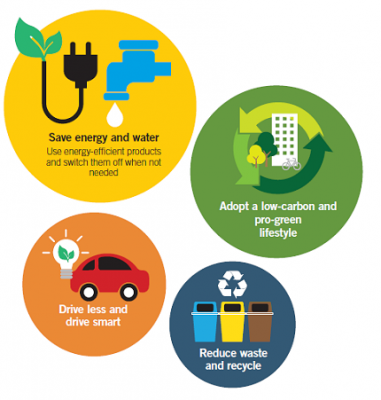
There are many ways you can help slow down climate change. Just by turning off your computer or the TV when you’re not using them, or the lights when you leave a room, or by walking to school, you reduce the level of waste gases in the atmosphere.
Renewable energy:
Use more energy from resources that there are plenty of, such as sunshine, wind, and waves. Wind and solar energy have experienced remarkable growth and huge cost improvements over the past decade with no signs of slowing down. Prices are declining rapidly, and renewable energy is becoming increasingly competitive with fossil fuels all around the country. In some places, new renewable energy is already cheaper than continuing to operate old, inefficient and dirty fossil fuel-fired or nuclear power plants.
Green transport:
Avoid transport that releases waste gases into the air. When you can, cycle or walk instead. Even when considering hybrid cars, bikes are still more environmentally friendly. Hybrid cars are still much larger than a bicycle and still require a battery, which clearly has known carcinogens. Hybrid cars often have nickel batteries and nickel mining contributes to air pollution as well. Hybrids also still require gas to run, while bikes do not.
When you choose a bike over a car, you are less likely to go further because it’s hard to ride a bike for long distances. When you’re in the car, it’s easier to travel further from home, which releases even more pollutants into the air around you.
Recycle:
Recycling helps reduce greenhouse gas emissions by reducing energy consumption. Using recycled materials to make new products reduces the need for virgin materials. This avoids greenhouse gas emissions that would result from extracting or mining virgin materials. In addition, manufacturing products from recycled materials typically requires less energy than making products from virgin materials.
Waste prevention and smart shopping are even more effective at reducing greenhouse gas emissions that result from energy consumption. When we buy less or reuse products, less energy is needed to extract, transport and process materials to manufacture products. Purchasing products made from recycled materials, such as paper, plastics, and metal, instead of virgin materials also helps to reduce energy consumption. In addition, waste prevention and recycling paper products allows more trees to remain standing, where they can continue to remove carbon dioxide from the atmosphere.
Save electricity:
Stop leaving your computer or the TV on standby, and turn off lights when you leave a room. When you consume less power, you reduce the amount of toxic fumes released by power plants, conserve the earth’s natural resources and protect ecosystems from destruction. By taking steps to reduce your energy intake, you’ll contribute to a healthier and happier world.
Grow your own food:
Food grown at nearer home saves on the fuel needed to transport it to local shops. For the average American, about 8% of personal carbon footprint comes from food! Of that, 28.5% is from transporting the food, and 10% is from . By growing as much food as you can in your back yard – you are cutting down these percentages. Ambitious gardeners that use their garden to replace 20% of bought food, reduce their carbon footprint by about 68 lbs of CO2 per year!
Picture Credit : Google



